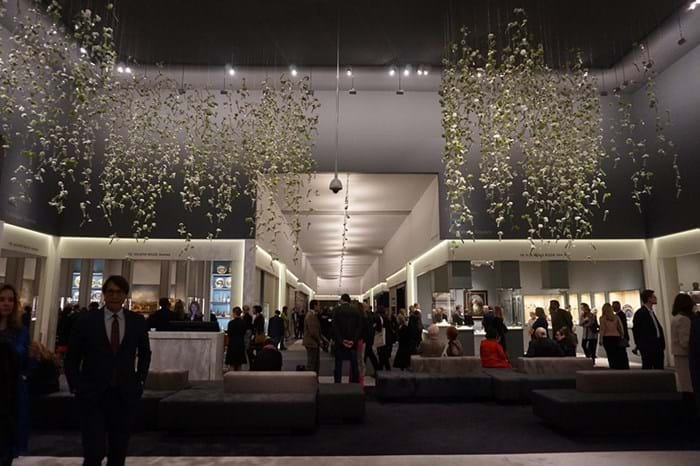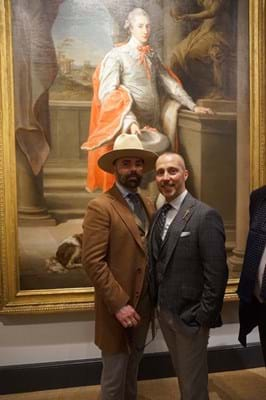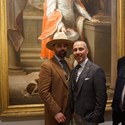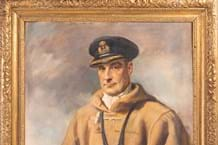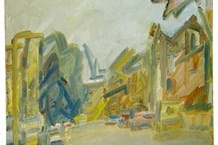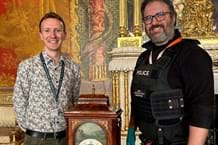
1. The closer to the opening, the more likely you are to see a big sale take place, with some sales happening before TEFAF’s doors are opened
On the fair’s first day, many of the biggest players will have been and gone early – they get a private view with dealers inviting their best clients to roam around for two hours to look and perhaps buy.
Generally, according to UK Old Master dealer Charles Beddington, by the Monday after the Thursday preview if you haven’t made a sale you might be feeling a little worried.
But regular clients will usually know what stock dealers plan to bring along to the fair and galleries publicise their TEFAF stands widely, so negotiations can start taking place even before the preview.
For example, a charming portrait of a dog from Beddington’s stand quickly found a new home the day before the preview, and disappeared from view on the second day.
2. A group of serious-looking buyers may be from a museum
In 2016, 254 museums from around the world came to Maastricht, slightly down on last year’s 262. This year in particular, I heard during my Thursday visit, from American museums.
And they came prepared to buy. One dealer, who had had some interest from Dutch museums, explained that a museum will send out its directors, curators and trustees to roam the floor together, so that when they see their dream piece, they can snap it up without losing time consulting over the phone.
For some galleries, notably Colnaghi, the system pays off, and many more were able to confirm ‘serious talks’ had already taken place by early afternoon of the preview.
3. Some dealers opt for price transparency – bravo
In the rarefied world that is TEFAF, price is not the expected starting point of a client inquiry to a dealer. Some dealers thought it best to get the subject out of the way by displaying a price list, or at least some prices, on their stand.
We applaud Shapero Rare Books, arms and armour dealer Peter Finer, Dutch 19th and 20th century fine art dealer Kunstgalerij Albricht, and British picture dealer Rupert Maas amongst others, for this useful practice.
4. TEFAF is a great way to get acquainted with galleries from all over the world
For many of the dealers I spoke to during the preview and opening day of TEFAF 2016, making contacts at TEFAF is almost as important as making sales – more if you consider that a fruitful relationship can lead to many sales over the years.
However, at TEFAF each gallery space is a representation of what they sell and what they stand for. Many will set up their stand to resemble their gallery at home. Antiquities specialist Charles Ede, for example, features the same dramatic spotlighting of their objects within a dark interior that they use for their space in London.
On the other hand, each year Rafael Valls, specialist in Old Master paintings, sets up a beautiful tile floor interior especially for TEFAF. It seems to come straight out of a Samuel van Hoogstraten painting – just the sort of work they might sell.
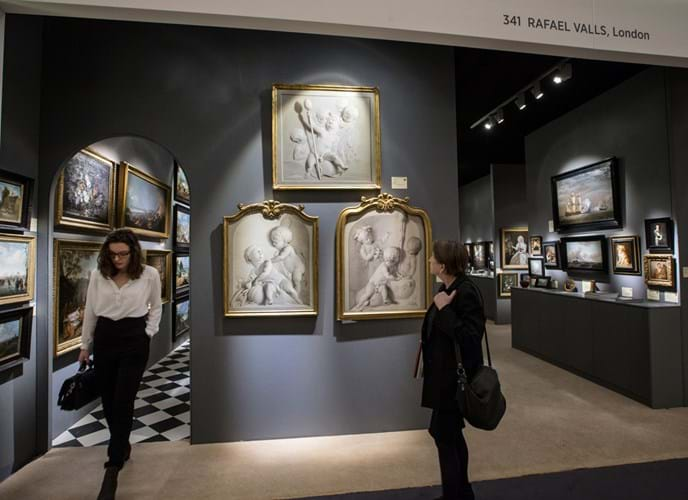
The stand of Old Master paintings dealer Rafael Valls with the tile floor interior seen to the left. Image courtesy of TEFAF. Photographer: Harry Heuts
5. Dealers take note of visitor nationalities
Few Americans, fewer Russians attended this year, I was told. This year, that’s the word on the street (and when I say street, all the passages at TEFAF are named after famous thoroughfares – New Bond Street, Sunset Boulevard, Champs-Élyseées and so on).
According to Patrick Heide, a dealer in contemporary works on paper, this year overseas visitors were mostly Swiss and Germans – including a new Swiss client who bought one of his major pieces. European paintings dealer Guy Stair Sainty, meanwhile, noticed that while the Spanish contingent used to come later in the fair, for the past few years, far more have been showing up for the opening.
6. The TEFAF ‘experience’ is everything
A lot of thought goes into the ‘soft’ side of the TEFAF brand. Before this year’s fair started, Patrick van Maris, TEFAF chief executive, told ATG that the flower displays, so much part of the TEFAF experience, would live up to their previous highs. So it was, with a constant stream of visitors bedazzled and taking pictures of the entrance display: a shower of roses and lilies of the valley in test tubes, suspended from the ceiling with invisible wires.
The new Works on Paper section had its own bar while the new seafood and Champagne bar on the main floor was constantly busy (too busy, one nearby dealer opined), with visitors imbibing from 12pm onwards.
7. Green doesn’t mean 'go'
Sheets of red stickers are distributed to each of the exhibitors as part of their TEFAF ‘pack’. These red dots are familiar harbingers of good news, as they are placed alongside the item as they are sold – often covering the price.
But some galleries use green dots when a painting is on reserve for a client. When a client wants a piece but needs to check with someone first (ie a boss, a business partner or a spouse), they will reserve it so that no one comes along to scoop it up while they are gone. This can often be good for the piece in question, as it garners interest among other visitors, and can lead to a waiting list behind the work.
Within hours of the preview opening on the first Thursday, the Fine Art Society had a gorgeous Whistler engraving on reserve. They, however, favour half a red dot rather than a whole green.
8. Fashion is a must… but wear comfy shoes
If you’re not in a cocktail dress, a statement scarf or a pair of lime green trousers you might want to re-think your wardrobe. This year, shades were particularly in vogue. A couple I saw had already donned their shades on the train from Liege before wearing them against the winter light of the Maastricht sun.
But while it may be all well and good to wear four inch heels if you’re only stopping off for some oysters and Champagne, if you’re seriously pounding the carpeted corridors of TEFAF, think comfort rather than vertiginous heels.
9. There’s a name for bargain-hunting buyers who show up on the closing weekend of the 10-day event
“Bottom feeders” is how two dealers described this breed of buyer to me. They’re spoken about with a sort of affectionate exasperation – after all, even the ‘cheapest’ object at Maastricht is beyond the reach of most mortals.
Another dealer pointed out to me that it’s great to make sales to anyone on the second weekend, when the initial influx of buyers has usually gone.
10. TEFAF is always evolving
Since the opening of Pictura Fine Art in 1975 and Antiqua in 1978, Maastricht has seen its share of European art fairs, and as the descendant of these two fairs, TEFAF is still changing.
Sometimes these changes can rankle – one dealer was still grappling with their new location by the Works on Paper entrance when ATG spoke to them – but for the most part, exhibitors welcome the broader walkways and easier navigation that marked this year’s event. And there were even lifts to the Works on Paper stand which is on a level above the rest of the fair.
As prints dealer E.H. Ariens Kappers points out, older people enjoy coming to look at books on works on paper. It’s about time.
Oh and…
Pouilly Fume was the most popular wine during the preview. Such was the impression of the staff of Oestercompagnie working at TEFAF’s very own oyster bar.
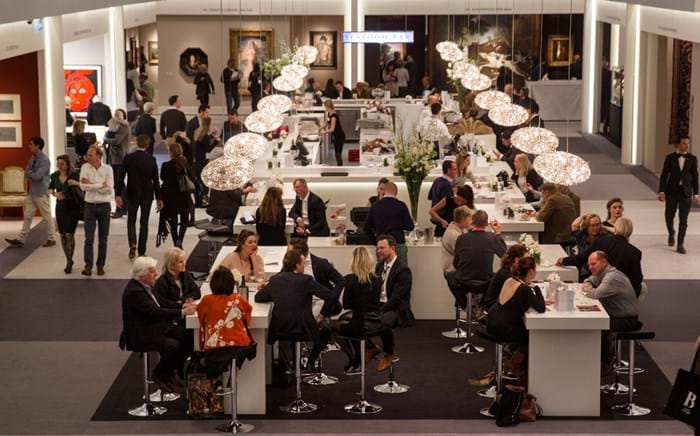
The catering options at TEFAF 2016 included the prominent Seafood Bar. Image courtesy of TEFAF. Photographer Harry Heuts.


